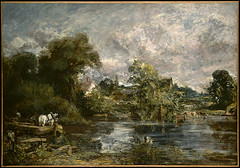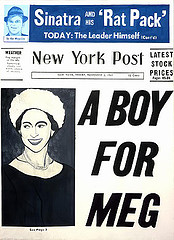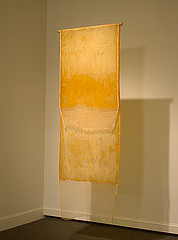Notes on the Unacceptable and the Ephemeral
Post by Andrea Kirsh

John Constable
The White Horse, 1818-1819
Widener Collection
1942.9.9
I was in the National Gallery of Art yesterday; of course I went to the John Constable exhibition, which is extraordinary and should be seen by everyone interested in painting. But later I took some students through the modern galleries and we ended up in a room of early 1960s art, exactly two floors below the Constables.
We are all so much heirs of Romanticism that it is worth remembering that in Constable’s day landscape painting, unleavened by Classical, religious or historical figures in the foreground, was not considered the subject of ambitious art.
Nor, of course, were comic strips and soup cans in 1962. Of course the later artists were trying to be unacceptable – there’s Roy Lichtenstein’s famous lament:
It was hard to get a painting that was despicable enough that no one would hang it – everybody was hanging everything. It was almost acceptable to hang a dripping rag, everybody was accustomed to this. The one thing everybody hated was commercial art; apparently they didn’t hate that enough either. (to Gene Swenson in ArtNews, 1963).

Commercial art?
Andy Warhol
A Boy for Meg, 1962
Gift of Mr. and Mrs. Burton Tremaine
1971.87.11
And sure enough, one room over from Lichtenstein’s 1962 Look Mickey and Warhol’s Campbell’s Soup was Eva Hesse’s dripping rag: a Test piece for Contingent, purchased by the Gallery in 1996 (at great cost, no doubt) and recently conserved with great effort.

Eva Hesse
Test Piece for “Contingent”, 1969
latex over cheesecloth, 144×144″
Gift of the Collectors Committee
1996.116.1
I had seen the Hesse in the conservation lab in its storage crate, on wheels, built specially so the piece could hang and have access to custom climate control. Even so, it will probably have a finite life, due to the inherent properties of cloth and rubber.
–Andrea Kirsh is an art historian living in Philadelphia. See her new series, Philadelphia Introductions, based on studio visits with emerging artists, at inliquid.com.









